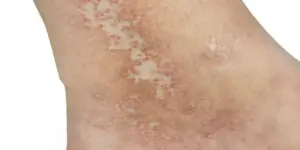As women enter menopause or perimenopause, hormone replacement therapy (HRT) becomes a consideration to address symptoms and mitigate long-term health risks. While estrogen and progesterone are the most well-known options, testosterone is increasingly being used for women’s HRT. But why is this the case, and what are the benefits compared to traditional estrogen-based therapies?
A Brief History of Menopause Treatment
Historically, menopause was not actively treated until the early 20th century, when ground-up sheep ovaries were used to reduce symptoms. Later, conjugated estrogens derived from pregnant mare urine (Premarin) became popular, often prescribed with synthetic progesterone (Provera) to prevent uterine cancer in women with an intact uterus.
The Women’s Health Initiative (WHI) trials in 2002 and 2004 led to a sharp decline in HRT use due to misconceptions about increased risks of breast cancer and heart disease. However, the WHI studies did not evaluate starting HRT in early menopause, but rather in women of any age. In fact, starting HRT within 10 years of menopause reduced cardiovascular mortality by about 40%, and Premarin alone decreased breast cancer risk.
The Rise of Testosterone
During the period of reduced HRT use, testosterone emerged as a potential option for menopausal women. Interestingly, women naturally have about 20 times more testosterone than estrogen in their bodies. Testosterone has been FDA-approved for metastatic breast cancer in women since the 1950s and is the hormone on which tamoxifen was based to block estrogen receptor-positive breast cancer.
Studies have shown that testosterone, with or without estrogen, significantly reduces breast cancer incidence by 28-70% compared to estrogen alone. Testosterone also effectively relieves menopausal symptoms. While estrogen reduces cardiovascular disease risk when started within 6-10 years of menopause, the prior mindset that estrogen causes breast cancer led to its underuse.
Testosterone as the Dominant Hormone
Today, many practitioners use testosterone as the dominant hormone in HRT, often with estrogen and progesterone. Testosterone pellets are preferred due to ease of use, consistent dosing, and fewer side effects compared to injectables or topicals. Estrogen is added in a much smaller dose (about 1/20th the testosterone dose) to provide additional cardiovascular and bone density benefits.
Why Choose Testosterone?
Testosterone can be used alone, particularly when breast cancer reduction is the primary concern. However, studies show that this benefit persists when estrogen is added to testosterone. While testosterone doesn’t prevent breast cancer, it does lower the risk significantly. When breast cancer does occur, testosterone has been shown to be protective.
The Future of HRT
The question remains of how long to continue HRT. Some recommend it for life, given the known benefits and the undesirability of returning to menopausal symptoms. While longevity data is still emerging, HRT appears to enhance healthy lifespan.
In conclusion, testosterone is increasingly being used in women’s HRT due to its benefits in symptom relief, cardiovascular and bone health, and breast cancer reduction. While estrogen still has a role, especially in the first decade after menopause, testosterone is becoming the dominant hormone in many treatment protocols. As with any medical decision, individualized care with a knowledgeable provider is key.
Read Dr. Mok’s book Testosterone: Strong Enough for a Man, Made for a Woman which you can download for free here.
















